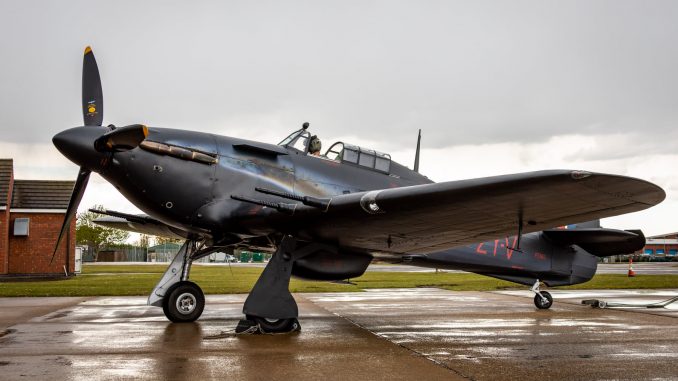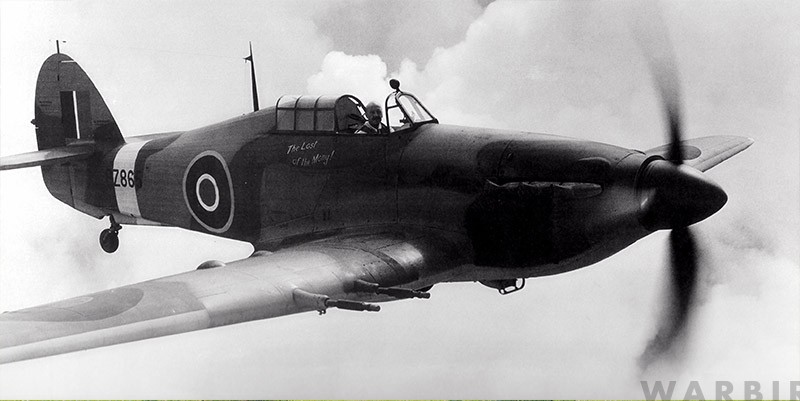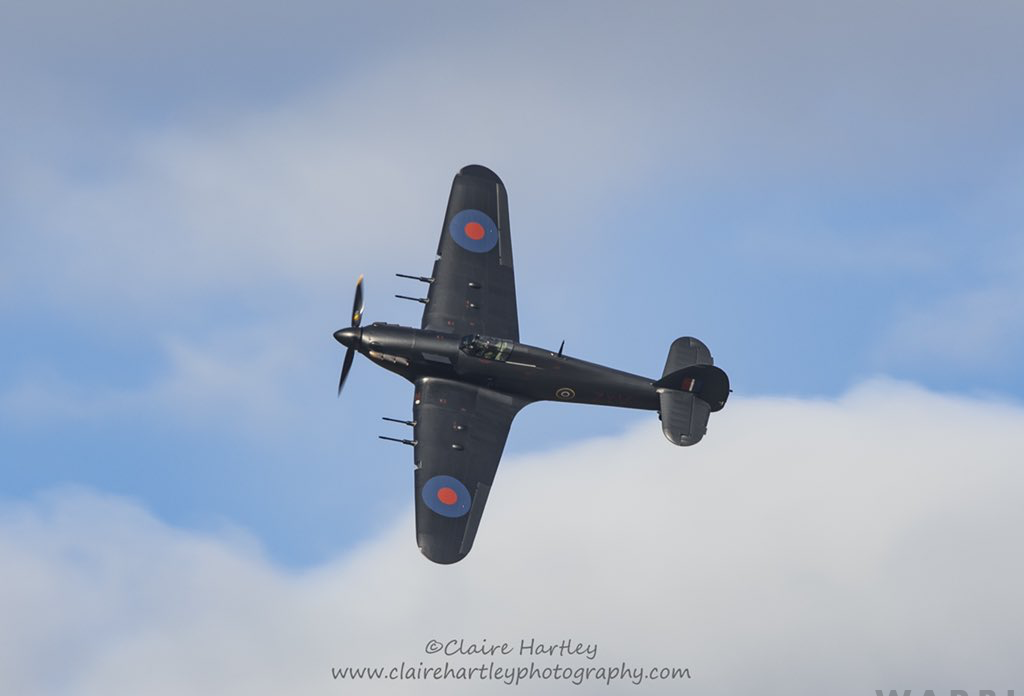

Wanting to preserve the final Hurricane ever built, the manufacturer purchased PZ865 back from the Air Ministry before she entered RAF service. For the next 28 years, Hawker (and its successor companies) used PZ865 in various capacities, including as a company ‘hack’, air racer, display aircraft, and for aerial sequences in films, including the famous movie ‘Battle of Britain’.
In 1972, a combination of limited resources and restricted hangar space at Hawker Siddeley’s Dunsfold facility forced the company to conclude that it could no longer maintain its collection of historic aircraft. The intervention of Duncan Simpson, who was then the Hawker Siddeley Chief Test Pilot, and his astute manoeuvring behind the scenes, gained sufficient permission to allow the Hurricane’s donation to the BBMF, which was then based at RAF Coltishall. In March 1972, before anyone could change their minds, Simpson flew PZ865 to Coltishall and handed the Hurricane over to the Flight. His arrival with this precious piece of British aviation history was unexpected, however. A BBMF Flight Sergeant greeted him as he climbed down from the aircraft saying, “Afternoon Sir, what have we here?” Duncan replied, “It’s a Hurricane, Flight Sergeant, a very special Hurricane, and I’m handing it over to you. Look after it and make sure it’s flying right into the future so that future generations can see it.”
The BBMF has done just that and Duncan Simpson’s wish to have this special Hurricane maintained in flying condition continues to be fulfilled more than 75 years after her first flight. The famous Hurricane went to Biggin Hill at the end of 2020 to undergo a ‘Major’ servicing with The Spitfire Company, which currently holds the MOD contract for ‘Majors’ on the BBMF fighter aircraft types. PZ865 has now emerged from the ‘Major’ in a new color scheme as an all-black night fighter.



I was at Duncan Simpson’s memorial service, a few years back. There were three eulogies and there were some funny stories as well as those covering the incredible danger he encountered as a test pilot. One of the most memorable, was how Duncan Simpson delivered an executive jet to Kellogg’s- I assume an HS125.A decision was made to paint the well=known slogan of “Snap, Crackle and Pop” on the side of the aeroplane- these being the Rice Krispies cartoon mascots. When the aircraft was delivered none of the Kellogg’s top brass found this amusing touch funny! More fool them, is all I can say!